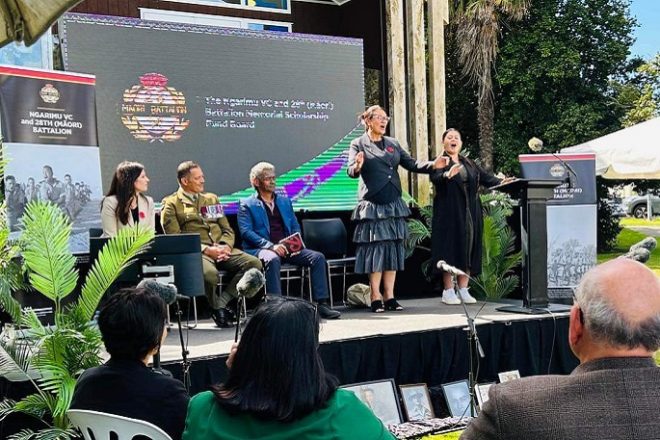On Friday, Erica Stanford, the Minister for Education and Ngarimu Board Chair, announced that thirteen Māori students have been honored with the Ngarimu VC and 28th (Māori) Battalion Memorial Scholarships and Awards. These awards recognize the students’ exceptional achievements and dedication.
The recipients this year include a doctoral candidate, four students pursuing their master’s degrees, four undergraduate students, two vocational education and training students, and two high school students.
“These scholarships honor the brave men of the 28th (Māori) Battalion and pay tribute to Victoria Cross winner Second Lieutenant Te Moana-nui-a-Kiwa Ngarimu,” said Ms. Stanford. The scholarships, established in 1945, aim to support Māori students in their educational pursuits and help them become leaders in New Zealand and beyond. Over 300 scholarships have been awarded since their inception.
The recipients embody the same commitment, determination, and leadership shown by the brave men of the 28th (Māori) Battalion, according to Ms. Stanford. She added that they are a true representation of the spirit of these special awards and serve as an inspiration to all.
The Waiata Composition Competition is a new addition to the scholarships and awards. It will be open to Māori students in Years 7 to 13. The competition aims to encourage Māori students to express their creativity and increase their understanding of the contributions made by the 28th (Māori) Battalion soldiers and their community to the shaping of the nation.
The competition will start accepting submissions from April 2024. More information will be available on the Ministry of Education website.
The 2024 recipients of the Ngarimu scholarships and awards include Dr. Monty Soutar ONZM, Heremia McGarvey, Maraea Coleman, Pounamu Wharehinga, Te Atamihi Papa, Ashton Thrupp, Miria Haora, Jade Davis, Melba Pakinga, Aramoana Mohi-Maxwell, Te Atawhai Kaa, Te Hiiri Ponga, Hinemaiaia Pitiroi, and Ngaawaimarino Simpkins.
























































-helped-regain-her-strength-and-balance-using-Nymbl-after-a-fall.-660x440.jpg)


